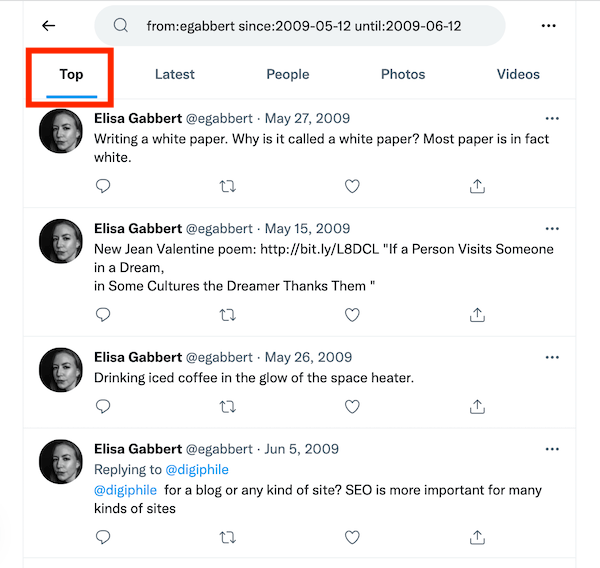Whether you’re trying to find an old tweet of yours or looking for specific information from the past, searching for tweets from the vast Twitter archive can be a daunting task. In this article, we will provide you with a step-by-step guide on how to effectively search for old tweets, enabling you to uncover valuable information, revisit memorable moments, or analyze historical data. So, let’s dive in!
1. Introduction: The Importance of Searching Old Tweets
Twitter has become a vast repository of thoughts, ideas, news, and conversations, making it an invaluable resource for researchers, marketers, journalists, and individuals seeking to explore the past. Searching old tweets can help you gain insights, track trends, or rediscover valuable information shared on the platform. By knowing how to effectively search for old tweets, you can unlock the full potential of Twitter’s historical data.
2. Utilizing Twitter’s Advanced Search Functionality
Twitter provides an Advanced Search feature that allows you to refine your search queries and filter results based on various criteria. Here’s how to make the most of it:
- Use specific keywords: Enter relevant keywords related to the tweet you’re searching for. Consider including usernames, hashtags, or phrases that appeared in the original tweet.
- Narrow down the date range: Specify the time frame in which you believe the tweet was posted. This can help narrow down the search results.
- Exclude unwanted content: Utilize the “Words to exclude” field to remove unwanted tweets from the search results.
- Utilize other filters: Twitter’s Advanced Search offers additional filters such as language, location, and sentiment, which can help you find tweets with specific characteristics.
3. Using External Tools for Enhanced Tweet Search
In addition to Twitter’s Advanced Search, several external tools can assist you in searching for old tweets more effectively. These tools often provide advanced filtering options, data visualization, sentiment analysis, and other features that can enhance your search experience. Some popular tools include:
- Tool 1: [Tool Name]
- Tool 2: [Tool Name]
- Tool 3: [Tool Name]
Explore these tools to find the one that best suits your needs and helps you uncover the tweets you’re searching for.
4. Filtering Search Results for Improved Accuracy
When dealing with a large number of search results, it’s essential to filter and refine them to obtain the most accurate and relevant tweets. Consider using the following techniques:
- Sort by relevance: Arrange the search results based on relevance to prioritize the most significant tweets.
- Sort by date: If you’re specifically looking for tweets from a particular time period, sort the results chronologically.
- Explore additional search options: Some tools and platforms offer advanced filtering options to narrow down the results further. These may include filters based on engagement, location, or user influence.
5. Organizing and Analyzing Old Tweets
Once you’ve gathered a collection of old tweets, organizing and analyzing them can provide valuable insights. Consider the following steps:
- Categorize tweets: Group related tweets together based on topics, keywords, or any other relevantcriteria.
- Create summaries or annotations: Write short summaries or annotations for each tweet to provide context and make it easier to reference later.
- Conduct sentiment analysis: Analyze the sentiment of the tweets to identify trends, patterns, or sentiment shifts over time.
- Extract key information: If you’re researching a specific topic, extract key information from the tweets to compile a comprehensive overview.
By organizing and analyzing old tweets, you can unlock the potential for valuable information and gain a deeper understanding of the historical Twitter data.
6. Best Practices for Efficient Old Tweet Searches
To optimize your search for old tweets, consider the following best practices:
- Be specific: Use targeted keywords and filters to narrow down your search and obtain more accurate results.
- Experiment with different search queries: Try various combinations of keywords, usernames, hashtags, and timeframes to ensure you’re covering all relevant possibilities.
- Explore third-party platforms: As mentioned earlier, external tools can provide additional functionalities and make your search more efficient.
- Document your findings: Keep track of the tweets you discover and the insights you gain to refer back to them easily in the future.
By following these best practices, you can streamline your old tweet searches and make the most of the available resources.
7. Conclusion
Searching for old tweets can be an exciting and valuable endeavor. Whether you’re conducting research, tracking trends, or revisiting personal memories, Twitter’s extensive archive of tweets holds a wealth of information. By utilizing Twitter’s Advanced Search functionality, exploring external tools, and employing effective filtering techniques, you can uncover the tweets you’re looking for and gain valuable insights from the past.
FAQs
-
Can I search for tweets from a specific user?
- Yes, Twitter’s Advanced Search allows you to search for tweets from a particular user by entering their username in the “From these accounts” field.
-
Can I search for tweets within a specific location?
- Yes, Twitter’s Advanced Search provides an option to search for tweets posted within a specific location or near a particular geographic area.
-
Are there any limitations to searching for old tweets?
- While Twitter’s Advanced Search enables searching tweets dating back to the inception of the platform, there may be some limitations in retrieving very old tweets due to various factors, such as deletion or account privacy settings.
-
Can I export the search results for further analysis?
- Some external tools and platforms allow you to export the search results in formats like CSV or Excel, enabling you to perform in-depth analysis using other software.
-
Are there any costs associated with using external tweet search tools?
-
While some tools offer free versions with limited functionality, others may require a subscription or offer premium features at a cost. Be sure to review the pricing options and choose a tool that aligns with your needs and budget.



